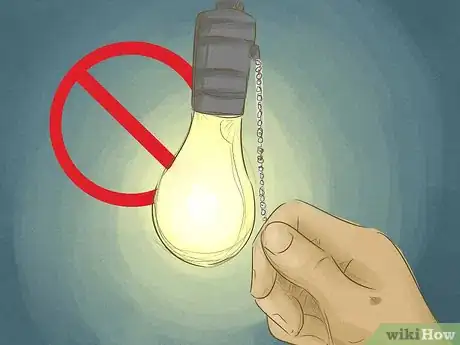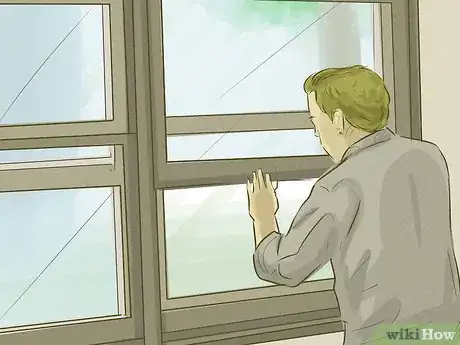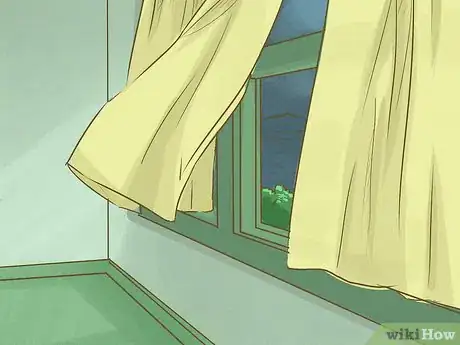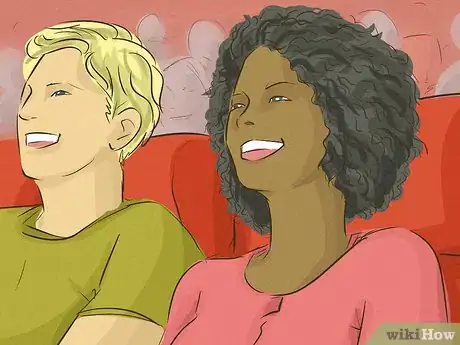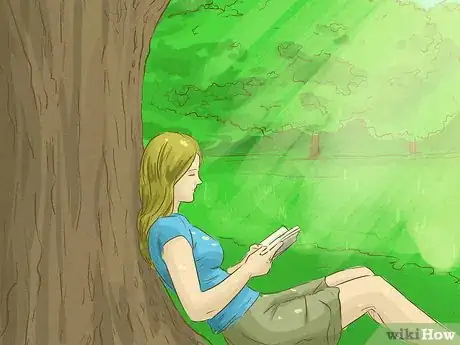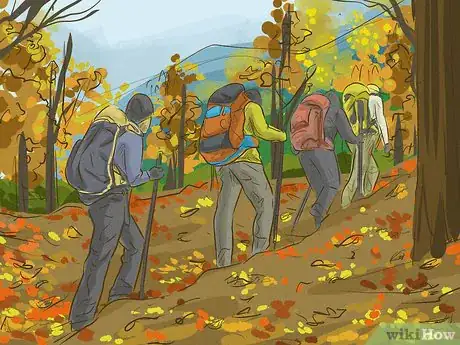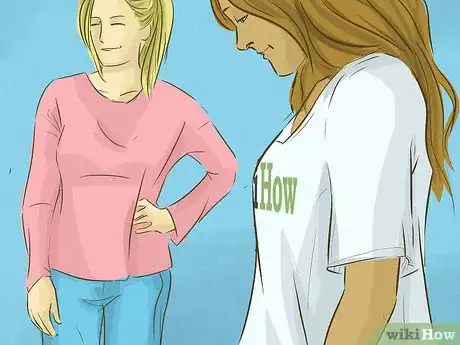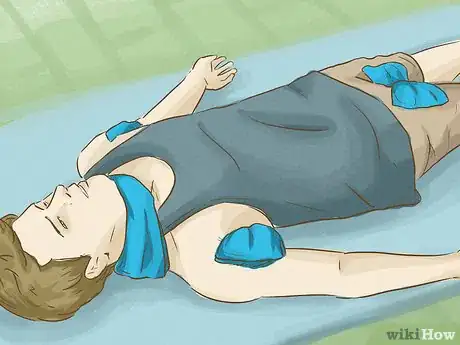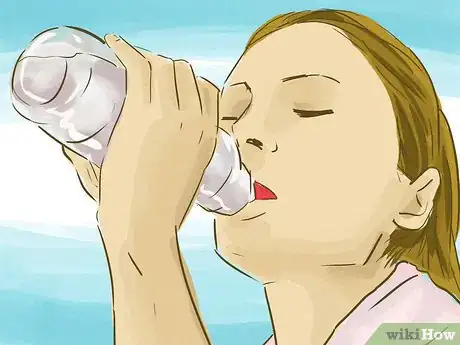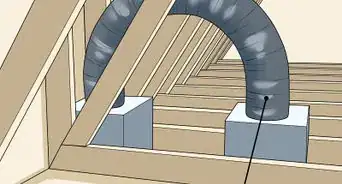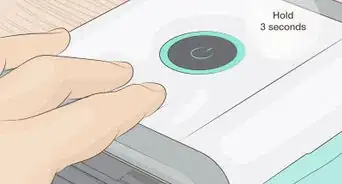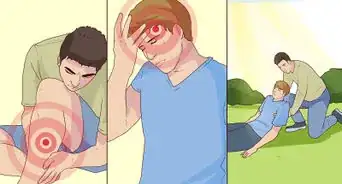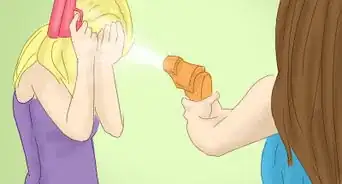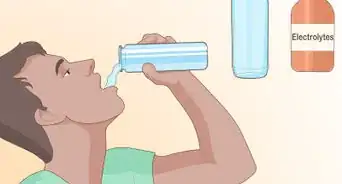This article was co-authored by Victor Belavus. Victor Belavus is an Air Conditioning Specialist and the Owner of 212 HVAC, an air condition repair and installation company based in Brooklyn, New York. In addition to HVAC and air conditioning units, Victor also specializes in furnace repair and air duct cleaning. He has over 10 years of experience working with HVAC systems.
There are 13 references cited in this article, which can be found at the bottom of the page.
This article has been viewed 182,824 times.
During the hot summer months, it can be difficult to stay cool and enjoy yourself, especially if you don't have air conditioning or have to be outside. You can keep cool indoors during the day by blocking out sunlight and avoiding activities that can make your home hotter. When you're outside, you can beat the heat by looking for shade, going to areas with a natural breeze, and wearing the right clothes.
Steps
Staying Cool Inside
-
1Turn off the lights in your home. Incandescent and even some LED bulbs produce heat while they light your home. Keep temperatures down by only using the lights when absolutely necessary, and utilizing other light sources, like your phone flashlight.[1]
- You can also unplug any lamps or electronic devices that you aren’t using. Sometimes, even electronics in “standby” mode can be warm because they’re drawing electricity from the outlet.
-
2Keep your windows closed during the day. While it may seem counterproductive, having the windows open lets the hot air from outside into the home. As soon as the sun comes up, close and lock the windows to keep the cooler air trapped in your home.[2] [3]
- If your windows don’t lock or you feel some air leaking in when you close them, consider placing a towel along the sash where the window opens to block the air.
Advertisement -
3Block the windows with sun shades or curtains. Hang up blackout curtains or place a car sun shade in the window during the day. As soon as the sun is up, close the curtains completely or unroll the sunshade to keep the sunshine from heating your home.[4]
- Car sun shades normally have a shiny backing material that reflects the sun and work well for smaller windows.
- Blackout curtains absorb the sunlight and tend to work well for larger windows.
-
4Open your windows and use fans to amplify a breeze at night. Once the sun goes down, set up a large fan in front of an open window to blow cooler air into the room. If you have a ceiling fan, turn it on to circulate the air throughout the room.[5] [6]
- If it’s an extremely warm night, spritz yourself with cold water from a water bottle and stand in front of the fan before going to sleep. This can cool down your body temperature immensely and help you get to sleep.
-
5Get a dehumidifier to keep moisture down during hot days. Humidity can make heat feel a lot worse than it really is. Invest in a basic dehumidifier for the rooms where you spend the most time, like the living room and bedroom. The dehumidifier will pull moisture from the air, making the heat less muggy.[7] [8]
- Dehumidifiers can be helpful even if you have a window air conditioning unit because they remove the moisture from the air before it circulates into the air conditioner, making the process more efficient. Without a dehumidifier, the air conditioner would have to cool and dehumidify the air.
-
6Avoid turning on appliances that can heat your home. During the summer, it’s best to eat cold meals or do most of your cooking with the microwave or outside on a grill. Keep your stove and oven turned off on the hottest days to keep the air as cool as possible.[9]
- If you need to cook inside, consider using a griddle or panini press to cook, which have less power and will give off less heat into the kitchen.
- Your dishwasher can also make your home hotter in the summer. Try washing your dishes by hand to avoid releasing hot, moist air into your home.
Enjoying Summer Activities
-
1Do indoor activities during the hottest part of the day. From 10 a.m. - 4 p.m., the temperatures outside can be sweltering. To keep cool and avoid the harsh sun, stay indoors or go to a location that has air conditioning if you don’t have it at your home.[10]
- For example, if you want a low-cost activity, you can plan to study at the library, or go for a walk in the mall.
- If you want a fun activity to do with friends you can plan to have lunch with friends in a restaurant, go to a museum, or see a movie.
-
2Find places to rest in the shade if you’re outside for long periods of time. Avoid spending longer than 30-45 minutes in direct sunlight during the day. When you’re doing an outside activity, take time to sit under a tree, relax under an umbrella, or hang out in a tent to replenish your energy.[11]
- If you’re going somewhere where there won’t be many shady places to sit, remember to pack an umbrella or tent. In a pinch, you can even sit under the tailgate of an SUV or in a car with the windows open.
-
3Plan a trip to somewhere cooler if you want to enjoy the outdoors. Places like mountains, dense forests with plenty of shade, rivers, and valleys have natural breezes that can be extremely refreshing and cooling. If you want to do something outside, plan a day of hiking in a forest under the shade of trees, or take a walk along a river or stream with a strong breeze.[12]
- Remember that the breeze won't always be blowing in these places, but they tend to be more windy than other areas.
-
4Wear lightweight and light-colored clothing to keep your body cool. Lightweight clothes in a lighter color, like white, pale blue, light tan, light pink, and pale yellow, are the best choice when you’re trying to keep cool. If you’re at the beach or at home, you can wear less clothing, like tank tops and shorts or a bathing suit. If you’re running errands or going to work, wear clothes made of light materials like linen, cotton, silk, or other breathable fabrics.[13]
- When you’re trying on clothes, aim for styles that have looser, flowy cuts, which can keep your body cooler and less restricted.
-
5Take a break from the heat if you start to feel sick. If you’re outside during the day, and start to feel dizzy or sick, go indoors into a cool area and drink at least 2 US quarts (1,900 mL) of water. Be sure to rest for at least 2 hours before going back outside. Symptoms such as dizziness, headaches, or stomach aches can be early signs of heat illness, which can be serious.[14]
- Symptoms like profuse sweating, mumbling or incoherent speech, convulsions and chills, and vomiting are more serious. Contact emergency medical services immediately if you see someone experiencing these symptoms.[15]
- If you find that you can’t cool down after you come indoors, submerge your body in cold water or place ice packs under your armpits, behind your neck, and in the groin area. If you don’t feel cooler within 5 minutes, call emergency services for assistance.[16]
Hydrating in the Summer
-
1Drink at least 96 fl oz (2,800 mL) of water on hot days. Aim to consume at least 8 fluid ounces (240 ml) of water each hour when the temperatures are hot to keep your body hydrated. Try to drink water with every meal and throughout the day to keep your body hydrated and cool.[17]
- If this seems daunting to you, carry around a bottle of water with you during the day, or switch out 1 beverage each day for a glass of water.
-
2Avoid caffeine and sugary beverages. Drinks like coffee, tea, and soda can make you slightly dehydrated when you drink them. Try to limit yourself to 1 caffeinated or sugary beverage per day, and focus on drinking water before and after you have caffeine or sugar.[18]
- If you like the flavor of sodas, consider adding flavor to your water with flavor drops or powders that you can purchase at the supermarket. That way, you can get the health benefits of water with the flavor of a soda.
- If you enjoy the carbonation of soda, consider drinking carbonated water instead of soda.
-
3Have a sports drink after performing strenuous activities. When you’re doing a lot of sweating, like when you’re running, lifting weights, playing a sport, or even gardening, your body can quickly become dehydrated. After you drink a sports drink, have at least 1 cup (240 mL) of water to rehydrate your body completely.[19]
- Sports drinks contain a mixture of carbohydrates, sodium, and potassium, called electrolytes, which help replace the minerals that you lose when you sweat and encourage hydration.
Warnings
- Spending too much time in the sun or heat can cause serious medical emergencies. If you start to feel sick, try to cool your body down. If you can’t get cool, call emergency services for help.⧼thumbs_response⧽
References
- ↑ https://www.goodhousekeeping.com/home/a25785/cool-without-air-conditioning/
- ↑ Victor Belavus. Air Conditioning Specialist. Expert Interview. 6 May 2020.
- ↑ https://www.goodhousekeeping.com/home/a25785/cool-without-air-conditioning/
- ↑ https://www.apartmenttherapy.com/how-to-keep-cool-without-an-air-conditioner-171724
- ↑ Victor Belavus. Air Conditioning Specialist. Expert Interview. 6 May 2020.
- ↑ https://www.goodhousekeeping.com/home/a25785/cool-without-air-conditioning/
- ↑ Victor Belavus. Air Conditioning Specialist. Expert Interview. 6 May 2020.
- ↑ https://www.popsci.com/keep-cool-minimal-ac#page-6
- ↑ https://www.goodhousekeeping.com/home/a25785/cool-without-air-conditioning/
- ↑ https://www.cancer.org/latest-news/stay-sun-safe-this-summer.html
- ↑ https://www.nytimes.com/2018/07/06/health/ways-to-stay-cool-summer-heat-nyt.html
- ↑ https://climate.ncsu.edu/edu/Breezes
- ↑ http://www.skincancer.org/prevention/sun-protection/clothing/protection
- ↑ http://www.medicinenet.com/heat_stroke/article.htm
- ↑ https://www.cdc.gov/disasters/extremeheat/warning.html
- ↑ https://www.mayoclinic.org/first-aid/first-aid-heatstroke/basics/art-20056655
- ↑ https://my.clevelandclinic.org/health/diseases_conditions/hic_avoiding_dehydration
- ↑ https://my.clevelandclinic.org/health/diseases_conditions/hic_avoiding_dehydration
- ↑ https://www.self.com/story/do-you-really-need-to-drink-a-sports-drink
About This Article
If you want to stay cool during the summer while inside, keep your home darker than usual by blocking windows with sunshades or curtains and turning off any incandescent lightbulbs. While you might want to let the breeze in, keep your windows closed since they will likely bring hot air into your home. When you go outside, stay cool by resting in the shade either under a tree or an umbrella. Opt for light-colored clothes like white, pale blue, light pink, or yellow, as these will absorb less sunlight than dark colors. Whether you’re inside or outside, make sure to drink at least 8 ounces of water every hour to stay hydrated. For more tips, like how to stay cool while hiking during the summer, read on!
